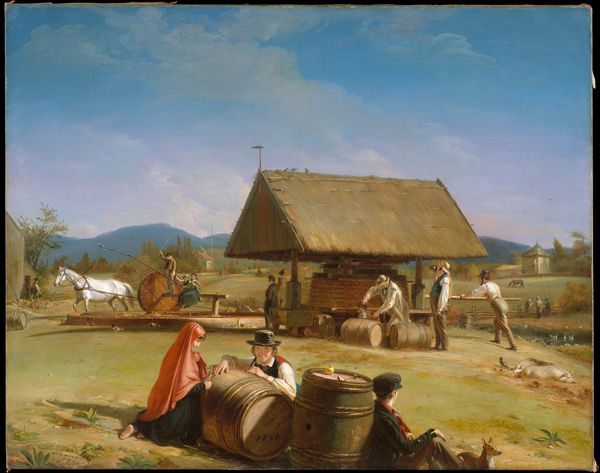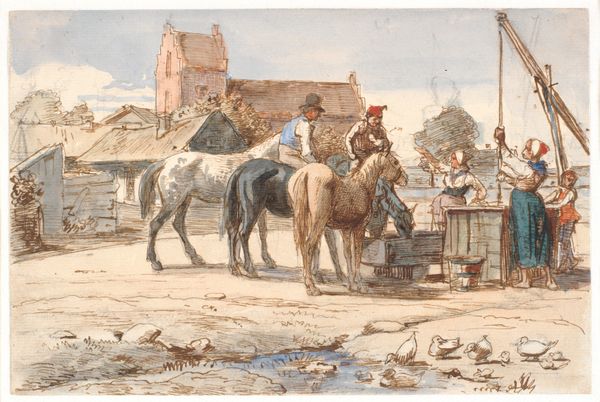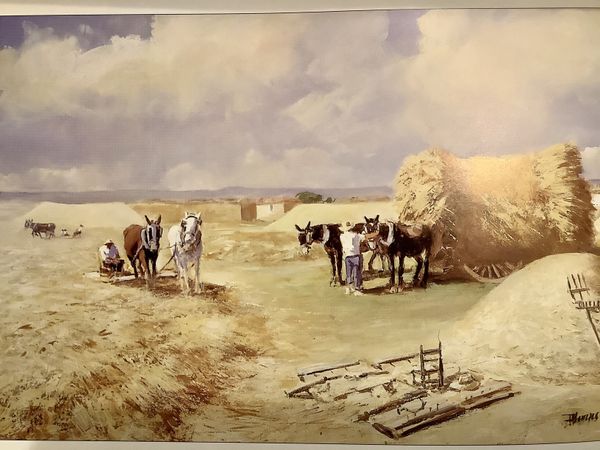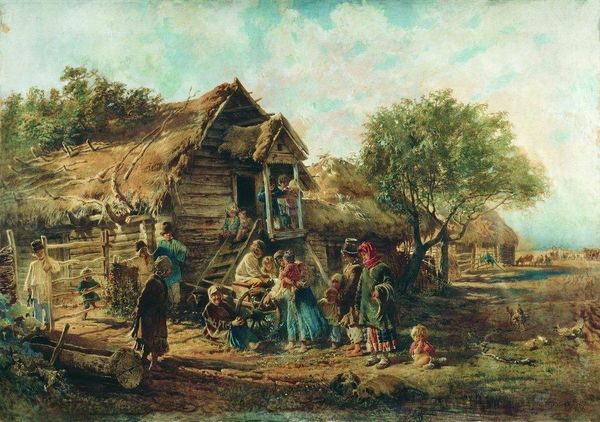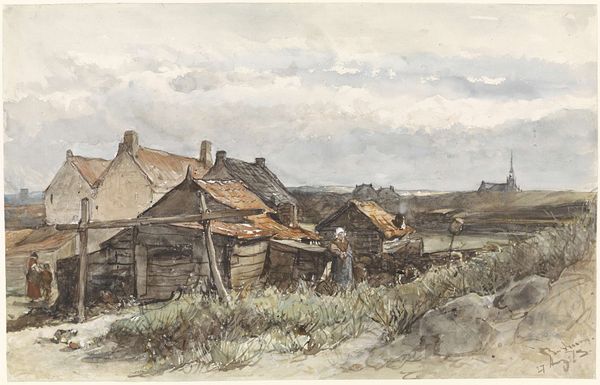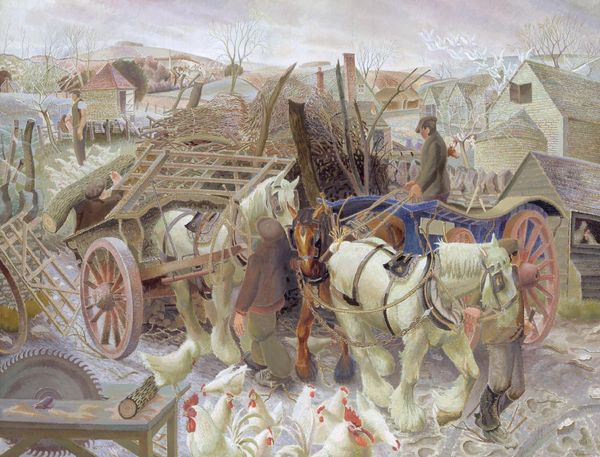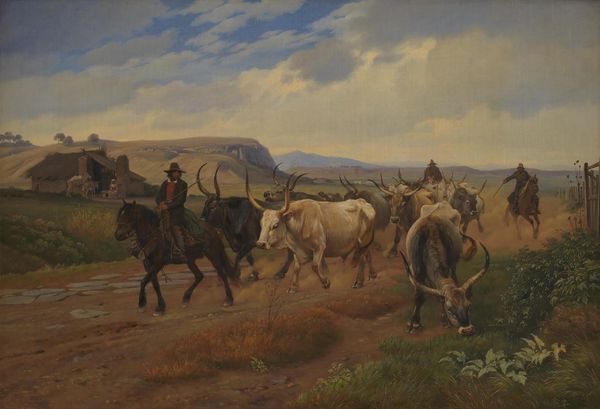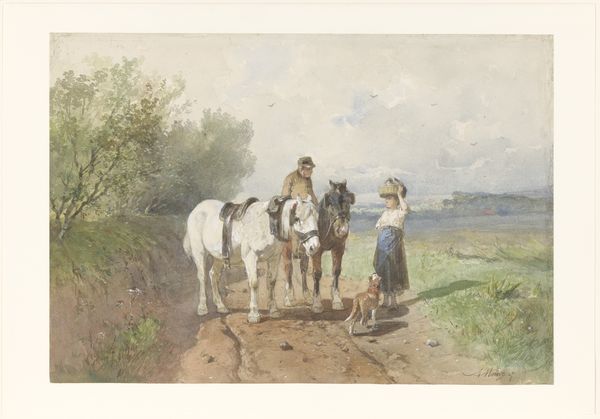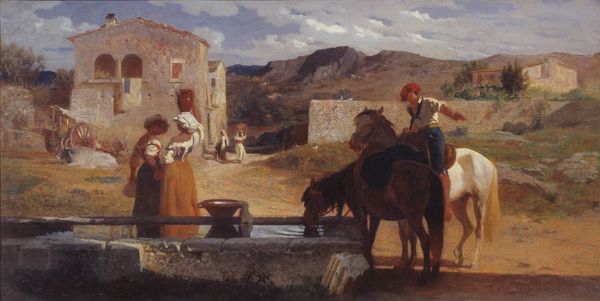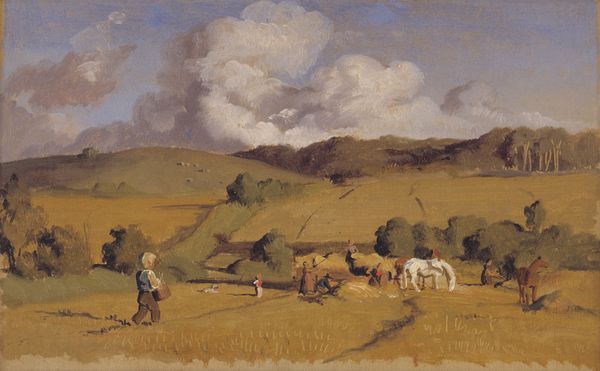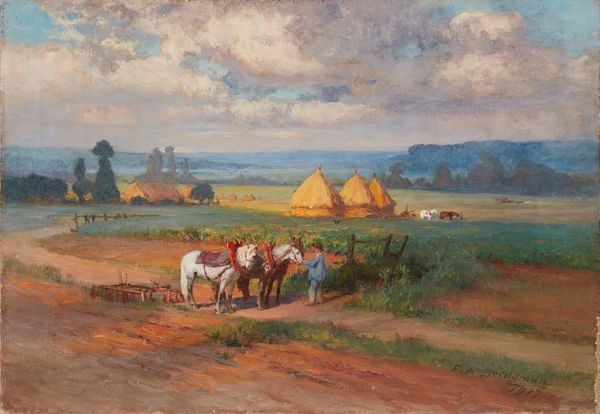
painting, oil-paint
#
painting
#
oil-paint
#
landscape
#
oil painting
#
genre-painting
#
history-painting
#
realism
Dimensions: 76.5 cm (height) x 100 cm (width) (Netto), 102.6 cm (height) x 126.2 cm (width) x 10 cm (depth) (Brutto)
Editor: So, this is Hans Smidth’s oil painting, "A Stranger Asking his Way at a Farm on the Moors," painted in 1877. I'm struck by how much detail Smidth includes; it really feels like we’re peering into a specific moment in time. What details jump out at you? Curator: The figures, of course, but also their placement in a vast, windswept landscape and the architecture. Consider this painting through the lens of land ownership and the historical displacement of rural communities. What narrative do you think Smidth is presenting? Editor: Well, the stranger seems almost out of place on horseback. He contrasts quite strongly with the people around the farmhouse; perhaps it is a comment on the emerging class divisions within Denmark at this time? Curator: Precisely! Notice the dress of the people versus that of the rider and consider the power dynamics implied. This is 1877. Rural Denmark was changing rapidly, with industrialization and urbanization impacting traditional ways of life. Smidth isn't just painting a genre scene; he is portraying the tension between tradition and modernity, between the landowners and the rural population. What kind of dialogue does the composition establish, then? Editor: It’s almost like he's using the landscape itself to represent the broader socio-economic conditions and power dynamics at play! I now wonder who actually gets to traverse the moors. Curator: And who *owns* the narrative being presented? Consider also how notions of Danish national identity were being constructed and negotiated during this period, with artists like Smidth playing a crucial role in shaping perceptions of rural life and its inhabitants. Editor: That's given me a lot to think about. It’s made me realise there’s so much more going on beneath the surface of what at first just seemed like a quaint scene! Curator: Indeed. By examining the painting through a contemporary, critical lens, we unveil its complexities and reveal its lasting relevance in understanding the forces that continue to shape our society.
Comments
No comments
Be the first to comment and join the conversation on the ultimate creative platform.
